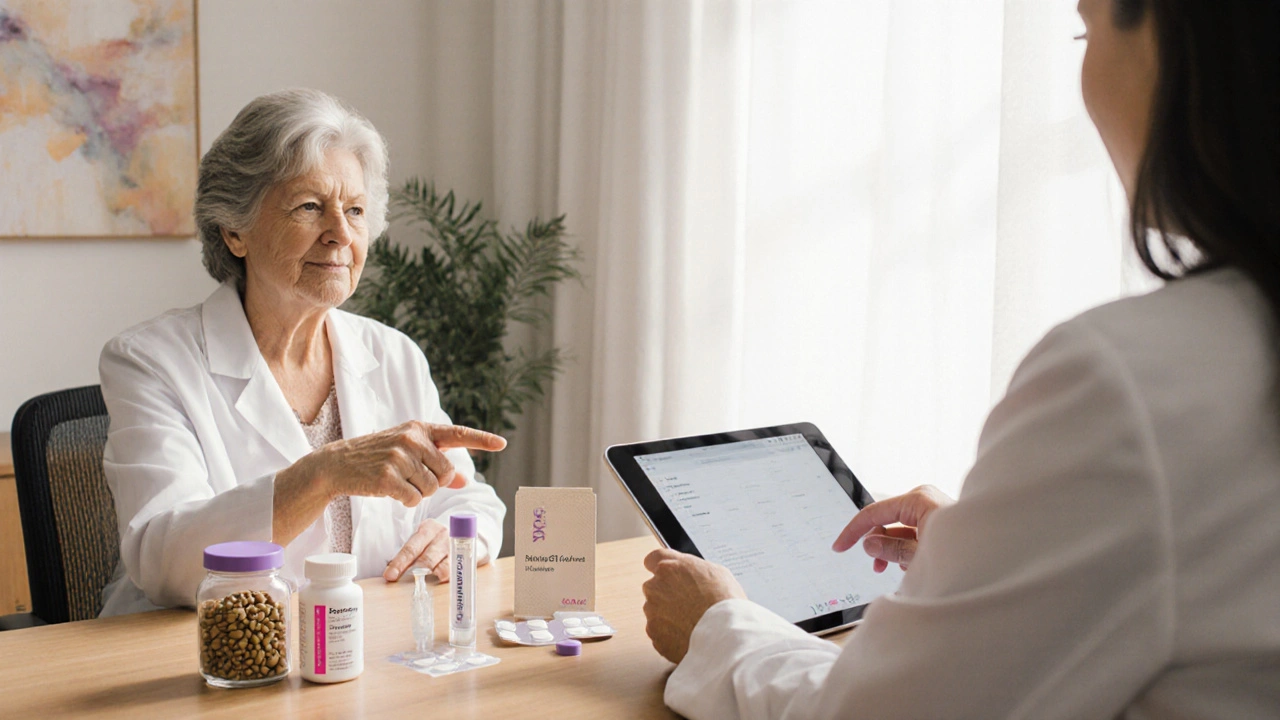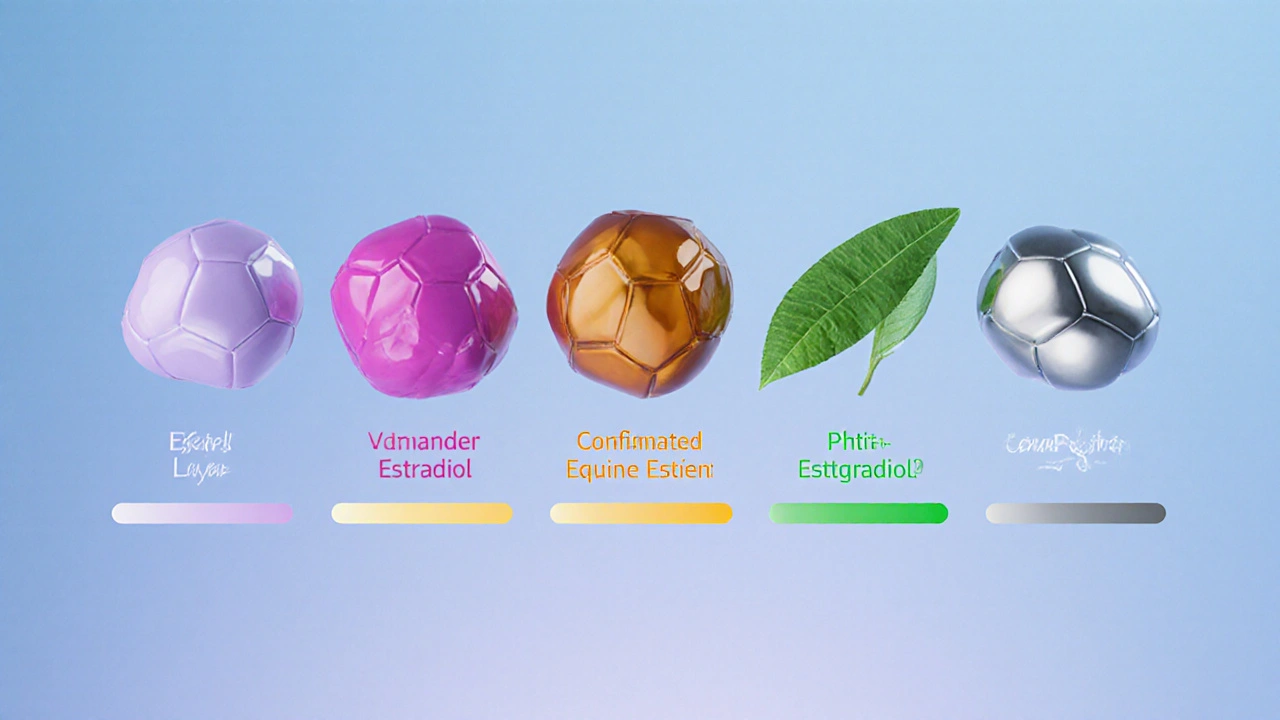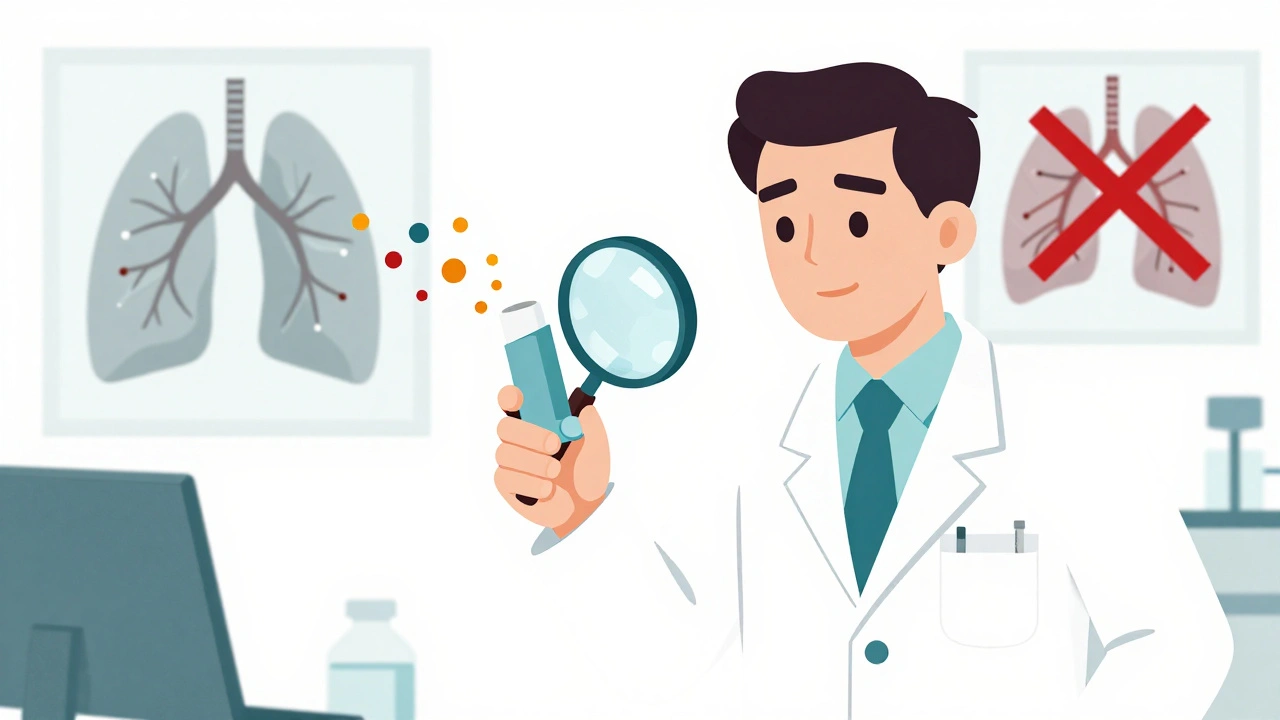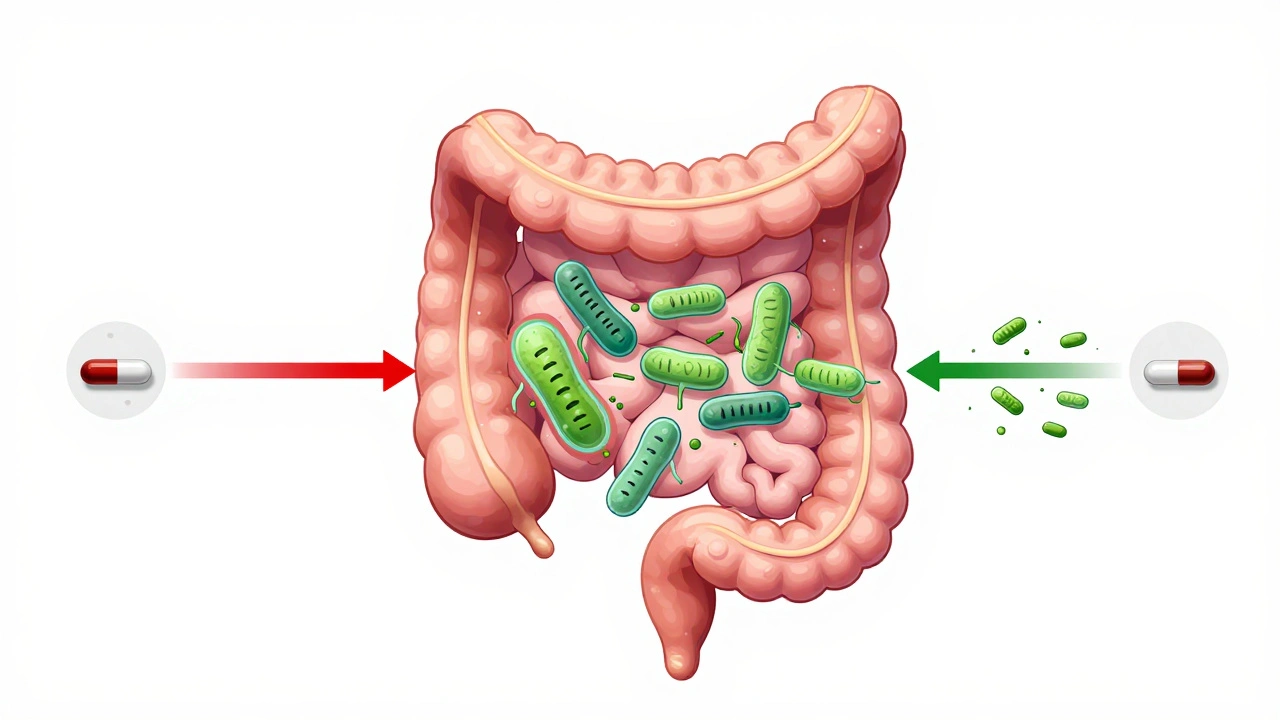Estriol vs Other Estrogen Options Comparison Tool
Quick Summary
- Estriol is the weakest natural estrogen, making it a popular choice for low‑dose hormone therapy.
- Estradiol is the most potent natural estrogen and is often prescribed for severe menopausal symptoms.
- Conjugated equine estrogens (CEE) are animal‑derived mixes; they work well for some but can cause more side effects.
- Phytoestrogens come from plants and suit women who prefer a “natural” route, though potency varies.
- Choosing the right estrogen hinges on symptom severity, health history, and personal preference for bioidentical vs. synthetic sources.
What is Estriol?
Estriol is a naturally occurring estrogen produced in small amounts during pregnancy and by the adrenal glands post‑menopause. Its binding affinity for estrogen receptors is roughly 1‑3% of estradiol, which gives it a milder physiological impact. Because of this low potency, many clinicians prescribe estriol for women who need gentle symptom relief without the higher risk profile of stronger estrogens.
Typical uses include mild hot‑flash control, vaginal dryness, and support for bone density when combined with calcium or vitamin D. Dosage ranges from 0.5mg to 2mg daily, often delivered as oral tablets, vaginal creams, or sublingual drops.
Common Alternatives to Estriol
When doctors talk about “estrogen options,” they usually refer to a handful of well‑studied alternatives. Below is a quick rundown of each, with the first mention wrapped in microdata.
- Estradiol is the dominant estrogen in pre‑menopausal women, offering the strongest symptom relief but also the highest exposure to estrogen‑related risks.
- Conjugated Equine Estrogens (CEE) are a blend of estrogenic compounds extracted from pregnant horse urine; they have been the backbone of many classic HRT regimens.
- Phytoestrogens are plant‑derived compounds (e.g., soy isoflavones, red clover) that mimic estrogen activity but with far lower potency.
- Ethinylestradiol is a synthetic estrogen used mainly in oral contraceptives; it’s very potent and not typically recommended for long‑term menopausal therapy.
- Bioidentical Hormone Replacement Therapy (BHRT) refers to custom‑compounded preparations that match the body’s own hormones, often mixing estradiol and estriol.
- Menopause is the natural transition marked by declining estrogen levels; it’s the clinical context that drives the need for any estrogen option.
- Hormone Replacement Therapy (HRT) is the umbrella term for any regimen that adds estrogen (with or without progesterone) to alleviate menopausal symptoms.

Side‑by‑Side Comparison
| Attribute | Estriol | Estradiol | CEE | Phytoestrogens | Ethinylestradiol |
|---|---|---|---|---|---|
| Potency (vs estradiol = 100) | 1‑3 | 100 | ~50‑70 (mix of compounds) | 0.1‑1 (varies by source) | ~150 (synthetic boost) |
| Typical daily dose | 0.5‑2mg | 1‑2mg (oral) / 0.5‑1mg (transdermal) | 0.3‑0.6mg (CCEE) | 40‑80mg isoflavones | 0.02‑0.03mg (combined pill) |
| Common routes | Oral, vaginal, sublingual | Oral, patch, gel, vaginal | Oral | Oral supplement, food | Oral (pill) |
| Side‑effect profile | Low: mild breast tenderness, rare breakthrough bleeding | Higher: increased risk of venous thromboembolism (VTE), breast tenderness, uterine bleeding | Intermediate: higher VTE risk than estriol, possible gallbladder issues | Very low: gastrointestinal upset, possible thyroid interaction | High: liver enzyme elevation, significant VTE risk |
| Best for | Women seeking gentle relief, those with history of estrogen‑dependent cancers | Severe hot flashes, mood swings, aggressive bone loss | Women preferring classic formulations, those on combined estrogen‑progestogen therapy | Women preferring “natural” supplements, mild symptoms | Not for menopause; used mainly in contraception |
How to Choose the Right Estrogen for You
Picking an estrogen isn’t a one‑size‑fits‑all decision. Here’s a simple checklist you can run through with your healthcare provider.
- Symptom severity: Mild to moderate hot flashes often respond well to estriol; intense vasomotor symptoms may need estradiol or CEE.
- Health history: A personal or family history of breast or uterine cancer tips the scale toward lower‑potency options like estriol or phytoestrogens.
- Cardiovascular risk: If you have clotting disorders or a smoking habit, avoid high‑potency estrogens (estradiol, ethinylestradiol) and consider transdermal routes, which have lower VTE risk.
- Preference for bioidentical vs. synthetic: Bioidentical (estradiol, estriol) matches human hormones; synthetic (ethinylestradiol) can be more potent but carries different risk patterns.
- Route of administration: Vaginal creams give direct local effect with minimal systemic exposure; patches provide steady levels without first‑pass liver metabolism.
Ask your clinician to run a baseline lipid profile, liver function tests, and possibly a bone density scan before starting any regimen. Monitoring every 3-6 months helps catch side effects early.
Practical Tips & Common Pitfalls
- Never double‑dose to chase faster relief; estrogen levels plateau and excess can raise clot risk.
- If you’re on estriol and still have nightly sweats, consider adding a low dose of estradiol rather than switching outright.
- Watch out for herb‑drug interactions: St. John’s wort can lower estrogen levels, while grapefruit juice may increase oral estrogen concentrations.
- Keep an eye on weight changes; some women notice fluid retention with stronger estrogens.
- For vaginal dryness, local estriol cream often works better than systemic pills because it bypasses liver metabolism.
Frequently Asked Questions
Is estriol safe for long‑term use?
Long‑term studies suggest estriol carries a lower risk of breast and endometrial cancer compared with higher‑potency estrogens. Still, annual check‑ups with mammograms and pelvic exams are recommended.
Can I combine estriol with a progesterone supplement?
Yes. For women with an intact uterus, adding micronized progesterone or a natural progesterone cream protects against unwanted uterine lining growth.
How does estradiol compare cost‑wise to estriol?
Estradiol is widely available as generic patches and pills, often costing $15‑$25 per month. Estriol, especially compounded formulations, can run $30‑$60 a month depending on pharmacy.
Do phytoestrogens work as well as prescription estrogens?
Phytoestrogens provide a very mild estrogenic effect. They may help with mild symptoms but generally don’t replace prescription estrogens for moderate‑to‑severe hot flashes.
Is there a risk of blood clots with estriol?
The clotting risk with estriol is considerably lower than with estradiol or synthetic estrogens. However, any estrogen can raise clot risk if you have underlying thrombophilia, so discuss screening with your doctor.








11 Comments